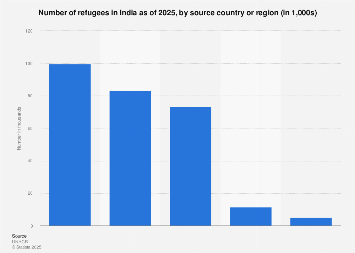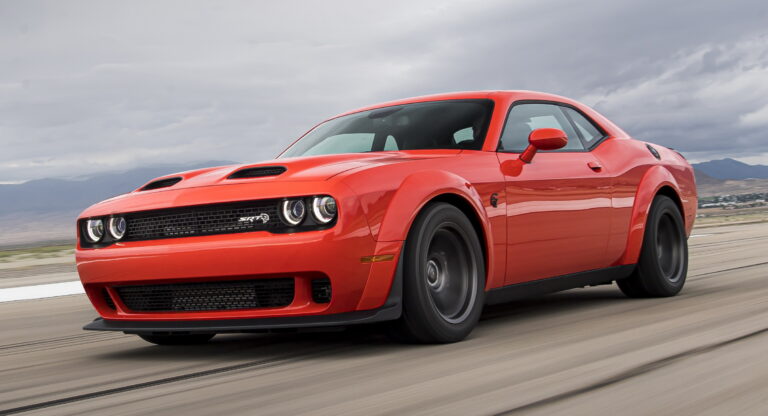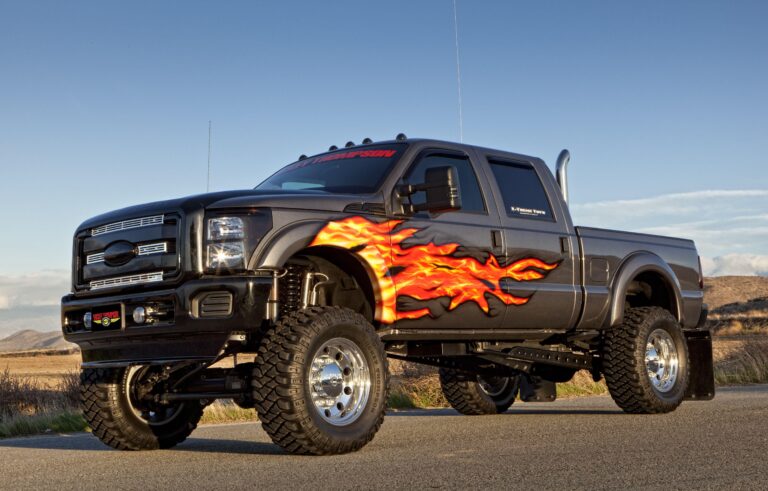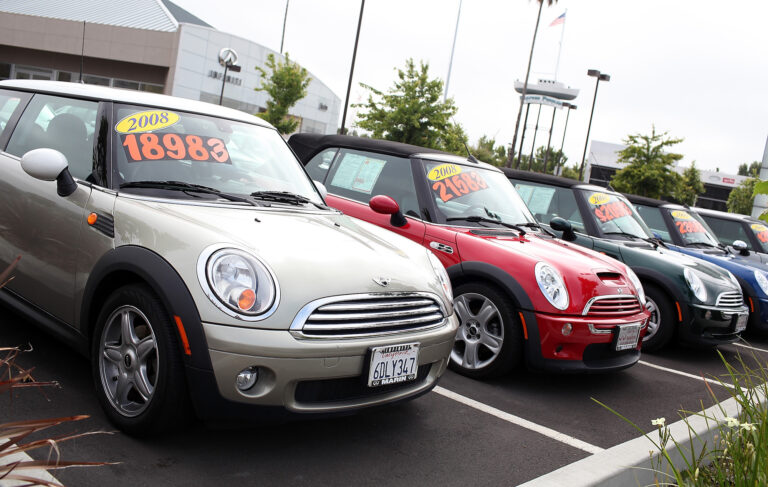Car Brands Nationality: Unraveling the Global Tapestry of Automotive Identity
Car Brands Nationality: Unraveling the Global Tapestry of Automotive Identity cars.truckstrend.com
In a world increasingly interconnected, the concept of "nationality" has become wonderfully complex, and nowhere is this more evident than in the automotive industry. What does it truly mean for a car brand to be "German," "Japanese," or "American" in an era of globalized manufacturing, multinational ownership, and internationally sourced components? "Car Brands Nationality" delves far beyond the badge on the hood, exploring the intricate web of ownership, design, manufacturing, and heritage that defines a vehicle’s true identity in the 21st century.
Understanding a car brand’s nationality is more than just an academic exercise; it impacts consumer perception, influences economic policy, shapes supply chains, and even carries geopolitical weight. For consumers, the perceived nationality often conjures images of specific engineering philosophies, design aesthetics, or quality standards. For nations, the presence of major automotive brands signifies economic power, technological prowess, and job creation. This article aims to untangle these threads, providing a comprehensive guide to the evolving and often surprising realities of car brand nationality.
Car Brands Nationality: Unraveling the Global Tapestry of Automotive Identity
The Evolving Definition of Nationality in Automotive
Traditionally, identifying a car brand’s nationality was straightforward: Mercedes-Benz was German, Toyota was Japanese, and Ford was American. This simplistic view reflected a time when companies primarily operated within their home borders, designing and manufacturing vehicles for domestic consumption before exporting them. However, the last few decades have seen an unprecedented wave of mergers, acquisitions, strategic alliances, and the establishment of global manufacturing facilities, fundamentally blurring these once clear lines.
Today, a car’s "nationality" is a multifaceted concept. Is it defined by:
- Where the company was founded (its historical origin)? This gives us the heritage and traditional brand identity.
- Where its headquarters are located? This indicates primary operational control and tax domicile.
- The nationality of its parent company or ultimate owner? This reveals who holds the purse strings and makes strategic decisions.
- Where the vehicle is designed? Design centers are often globally dispersed.
- Where the specific model is manufactured? Many "foreign" brands assemble vehicles in their target markets (e.g., German cars built in the USA).
- The origin of its components? A car’s parts can come from dozens of countries.

Consider Volvo. For decades, it was quintessentially Swedish, known for its safety and robust engineering. While its design philosophy and heritage remain deeply Swedish, the company has been owned by Chinese automaker Geely since 2010. Many Volvo models sold globally are now manufactured in China, Sweden, and other locations. So, is Volvo still "Swedish"? Yes, in heritage and core values, but its ownership and manufacturing footprint are decidedly global, primarily Chinese. This example perfectly illustrates the complexity we now face.

Key Global Automotive Hubs and Their Brands
While ownership and manufacturing are globalized, certain countries remain dominant players, influencing the industry with their distinct engineering philosophies, design trends, and market strategies.
Germany: Precision, Engineering, and Luxury
Germany is synonymous with automotive excellence, renowned for precision engineering, performance, and luxury.

- Brands: Volkswagen Group (Audi, Porsche, Lamborghini, Bentley, Bugatti, Skoda, SEAT), Daimler AG (Mercedes-Benz, Smart), BMW Group (BMW, Mini, Rolls-Royce).
- Characteristics: High-quality interiors, advanced technology, powerful engines, and a strong emphasis on driving dynamics. Despite their global reach and manufacturing, the core R&D and strategic direction remain firmly German.
Japan: Reliability, Efficiency, and Innovation
Japanese brands are globally recognized for their unparalleled reliability, fuel efficiency, and technological innovation, particularly in hybrid powertrains.
- Brands: Toyota (Lexus, Daihatsu), Honda (Acura), Nissan (Infiniti, Datsun, Mitsubishi Motors – part of Renault-Nissan-Mitsubishi Alliance), Mazda, Subaru, Suzuki.
- Characteristics: Practicality, high resale value, advanced manufacturing processes, and a strong focus on mass-market appeal while also excelling in luxury (Lexus, Acura, Infiniti). Many operate extensive manufacturing plants worldwide.
United States: Power, Size, and Electric Revolution
The U.S. automotive industry is historically known for large, powerful vehicles, especially pickup trucks and SUVs. It’s also at the forefront of the electric vehicle revolution.
- Brands: General Motors (Chevrolet, Cadillac, GMC, Buick), Ford (Lincoln), Stellantis (Jeep, Ram, Dodge, Chrysler – though Stellantis is Dutch-registered with Italian/French roots), Tesla.
- Characteristics: Emphasis on practicality, powerful engines, comfortable rides, and increasingly, cutting-edge electric vehicle technology. While Ford and GM are distinctly American, many of their models are manufactured globally, and Stellantis represents a true multinational conglomerate.
South Korea: Rapid Ascent and Value
South Korean automakers have rapidly ascended the global ranks, offering excellent value, impressive design, and a strong warranty.
- Brands: Hyundai Motor Group (Hyundai, Kia, Genesis).
- Characteristics: Aggressive styling, competitive pricing, extensive features, and significant investment in R&D, particularly in electric and hydrogen fuel cell technologies. Their growth has been phenomenal, establishing them as global players.
Europe (Beyond Germany): Style, Niche, and Alliances
Other European nations contribute significantly, often through large multinational groups.
- France: PSA Group (Peugeot, Citroën, DS Automobiles – now part of Stellantis), Renault Group (Renault, Dacia, Alpine). Known for quirky design, comfort, and smaller, efficient vehicles.
- Italy: Fiat Chrysler Automobiles (Fiat, Alfa Romeo, Maserati, Lancia – now part of Stellantis), Ferrari, Lamborghini (both owned by VW Group). Known for passion, style, luxury, and performance.
- United Kingdom: Many iconic British brands are now foreign-owned: Jaguar Land Rover (Indian – Tata Motors), Mini (German – BMW), Rolls-Royce (German – BMW), Bentley (German – VW). Their heritage remains British, but their strategic direction and investment come from abroad.
China: The Emerging Giant
China is the world’s largest automotive market and rapidly becoming a global automotive force, not just as a consumer but as a producer and innovator, especially in EVs.
- Brands: BYD, Geely (owns Volvo, Polestar, Lotus, Lynk & Co), SAIC Motor (owns MG, Maxus, Roewe), Nio, Xpeng, Chery, Great Wall Motors.
- Characteristics: Rapid technological advancement, aggressive expansion into electric vehicles, significant domestic sales, and increasing global exports. Chinese companies are also acquiring and investing in established foreign brands.
Why Does Nationality Matter (or Not)?
Despite the complex reality, the perceived nationality of a car brand continues to hold sway for various reasons:
- Consumer Perception & Stereotypes: Consumers often associate certain nationalities with specific attributes. German cars are seen as precise and engineered, Japanese cars as reliable, Italian cars as stylish, and American cars as robust. While these stereotypes are increasingly challenged by global standards, they persist and influence purchasing decisions.
- Economic Impact: Where a car is designed, engineered, and manufactured has direct economic consequences for that region or country in terms of jobs, R&D investment, and tax revenue. Even if a brand is foreign-owned, if it maintains significant operations (like a major factory or design center) in a country, it contributes to the local economy.
- Supply Chain Resilience: Geopolitical tensions and global events (like pandemics or chip shortages) highlight the importance of diversified and resilient supply chains. Understanding a brand’s actual global footprint, rather than just its perceived nationality, helps assess its vulnerability to such disruptions.
- Brand Identity and Heritage: For many car enthusiasts, a brand’s historical origin and the values it represents are paramount. Brands strive to maintain their "soul" and heritage even under foreign ownership, recognizing its value in attracting loyal customers. For example, while Mini is BMW-owned, its quirky British charm is a core part of its appeal.
- "Buy Local" Sentiment: In many countries, there’s a strong "buy local" sentiment. However, the reality of a globalized industry makes this difficult. Is a Toyota built in Kentucky "more American" than a Ford built in Mexico? These questions challenge traditional notions of supporting domestic industries.
Navigating the Nationality Maze: Practical Advice for Consumers
For those looking to make informed decisions about their next vehicle, here’s some practical advice:
- Look Beyond the Badge: Don’t assume a car’s nationality based solely on its brand name. Research the specific model you’re interested in. Find out where it’s assembled and, if possible, where its primary components (engine, transmission) are sourced.
- Understand Ownership Structure: Be aware of which larger automotive group owns the brand. This can give you insights into shared platforms, technologies, and strategic direction (e.g., Stellantis owns many brands, Volkswagen Group owns many luxury brands).
- Focus on Performance, Features, and Value: Ultimately, the car’s performance, safety features, reliability, design, and value proposition should be your primary considerations. While heritage is interesting, it might not directly translate to your driving experience.
- Consider the Design and Engineering Philosophy: Even if a brand is foreign-owned, its core design and engineering teams might still reside in its country of origin, influencing the vehicle’s character.
- Embrace the Global Reality: The modern car is a product of global collaboration. Components, expertise, and capital flow across borders. This globalization often leads to better, more competitive vehicles for consumers.
Concluding Summary
The concept of "Car Brands Nationality" is no longer a simple matter of origin. It’s a complex, dynamic interplay of heritage, ownership, manufacturing locations, and global market strategies. While traditional national identities continue to shape brand perception and design philosophies, the automotive industry has evolved into a truly global enterprise, characterized by cross-border mergers, shared platforms, and internationally sourced supply chains. For consumers, this means looking beyond simplistic labels and embracing the rich, multinational tapestry that defines the modern automobile. The future promises even greater interconnectedness, making the idea of a "pure" national car brand an increasingly rare phenomenon.
Table: Major Car Brands and Their Nationality/Ownership
This table provides a snapshot of major car brands, their traditional origins, and their current parent companies, highlighting the complexities of "nationality" in today’s automotive landscape.
| Brand | Traditional Origin | Current Parent Company | Primary Nationality of Parent Co. | Key Characteristics/Notes |
|---|---|---|---|---|
| Audi | Germany | Volkswagen Group | German | Luxury, advanced technology, part of a vast German conglomerate. |
| BMW | Germany | BMW Group | German | Driving dynamics, luxury, owns Mini and Rolls-Royce. |
| Mercedes-Benz | Germany | Mercedes-Benz Group AG | German | Luxury, innovation, engineering, also owns Smart. |
| Volkswagen | Germany | Volkswagen Group | German | Mass-market, diverse portfolio, global manufacturing. |
| Toyota | Japan | Toyota Motor Corporation | Japanese | Reliability, efficiency, hybrid pioneer, owns Lexus. |
| Honda | Japan | Honda Motor Co., Ltd. | Japanese | Reliability, engineering, engines, owns Acura. |
| Nissan | Japan | Renault-Nissan-Mitsubishi Alliance | Japanese/French | Part of a global alliance, owns Infiniti. |
| Mazda | Japan | Mazda Motor Corporation | Japanese | Driving pleasure, distinctive design. |
| Hyundai | South Korea | Hyundai Motor Group | South Korean | Value, design, rapid growth, owns Kia and Genesis. |
| Kia | South Korea | Hyundai Motor Group | South Korean | Value, bold design, strong warranty. |
| Ford | USA | Ford Motor Company | American | Trucks, SUVs, performance, global manufacturing. |
| Chevrolet | USA | General Motors | American | Mass-market, diverse range, part of GM. |
| Jeep | USA | Stellantis | Dutch (Italian/French roots) | Off-road capability, iconic American heritage, part of a multinational group. |
| Ram | USA | Stellantis | Dutch (Italian/French roots) | Trucks, commercial vehicles. |
| Tesla | USA | Tesla, Inc. | American | Electric vehicles, innovation, software-driven. |
| Peugeot | France | Stellantis | Dutch (Italian/French roots) | Distinctive design, comfort, part of a multinational group. |
| Renault | France | Renault Group | French | Mass-market, strong presence in Europe and emerging markets. |
| Fiat | Italy | Stellantis | Dutch (Italian/French roots) | Small cars, Italian style. |
| Ferrari | Italy | Ferrari N.V. | Dutch (Italian roots) | Supercars, luxury, performance, separate public company. |
| Volvo | Sweden | Geely Holding Group | Chinese | Safety, Scandinavian design, premium, strong EV focus. |
| Jaguar Land Rover | UK | Tata Motors Limited | Indian | Luxury, performance, SUVs, British heritage, Indian ownership. |
| MG | UK | SAIC Motor | Chinese | British heritage, now focuses on value and EVs. |
| BYD | China | BYD Company Limited | Chinese | Leading EV manufacturer, batteries, rapidly expanding globally. |
| Geely | China | Geely Holding Group | Chinese | Owns Volvo, Polestar, Lotus, rapidly expanding. |
Frequently Asked Questions (FAQ) about Car Brands Nationality
Q1: Is my Volvo still Swedish, even though it’s owned by a Chinese company?
A: Yes, in terms of its heritage, design philosophy, and a significant portion of its R&D, Volvo maintains its Swedish identity. However, its strategic decisions, investment, and increasing manufacturing are influenced by its Chinese parent company, Geely. So, it’s a blend of both.
Q2: Where are most cars sold in the USA actually made?
A: A surprisingly large number of cars sold in the USA, even by foreign brands, are manufactured in North America (USA, Canada, Mexico). Japanese, German, and Korean automakers have extensive manufacturing facilities in the US to reduce shipping costs and tariffs, and to cater specifically to the American market.
Q3: Does "Made in [Country]" mean the whole car is from there?
A: Not necessarily. The "Made in" label typically refers to the final assembly plant. However, modern cars are incredibly complex, with components (engines, transmissions, electronics, tires) often sourced from dozens of countries around the world, regardless of where the car is finally put together.
Q4: What’s the difference between a car brand’s origin and its current ownership?
A: A brand’s origin refers to the country where it was founded and developed its initial identity and heritage. Its current ownership refers to the nationality of the company that currently holds controlling interest. These can be the same (e.g., Ford), or very different (e.g., British MG owned by Chinese SAIC).
Q5: Are there truly "pure" national car brands anymore, with all operations in one country?
A: Very few. Most major automotive brands operate globally, with R&D, design, manufacturing, and sales spread across multiple continents. Perhaps some very niche, low-volume manufacturers or some newer, rapidly emerging Chinese brands focused initially on their domestic market might come close, but even they often source components internationally. The trend is overwhelmingly towards global integration.






